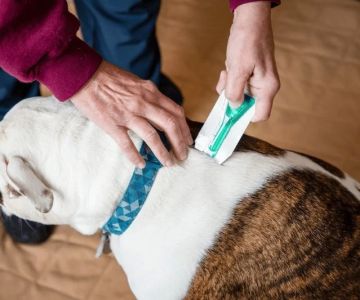- Understanding-the-Basics-of-Crate-Training
- Preparing-Your-Dog-and-Crate
- Step-by-Step-Crate-Training-Process
- Common-Challenges-and-How-to-Overcome-Them
- Real-Life-Examples-and-Professional-Insights
- Where-to-Find-Support-and-Resources
1. Understanding the Basics of Crate Training
Crate training is a powerful and humane tool for teaching dogs safe boundaries and encouraging positive behavior. Fundamentally, it involves introducing a dog to a secure, confined space—usually a crate or kennel—that becomes their personal den. This space offers comfort and safety, replicating a natural denning instinct that many dogs possess.
The goal of crate training is not to isolate or punish but to create a positive environment where your dog feels secure and relaxed. Proper crate use can aid in house training, reduce anxiety during travel, and prevent destructive behavior when you are not home.
1.1 Why Crate Training Matters
Dogs are den animals by nature, and a crate provides a familiar refuge. It helps prevent accidents indoors and teaches your dog to hold their bladder. Moreover, crates can ease the transition to new environments, especially for puppies or rescue dogs adjusting to a new home.
1.2 Myths and Misconceptions
Some owners worry that crate training is cruel or isolating. In reality, when done correctly, it fosters trust and security. Avoid using the crate for punishment, and never leave your dog confined for excessive periods.
2. Preparing Your Dog and Crate
Before starting crate training, it’s essential to choose the right crate and prepare your dog psychologically and physically.
2.1 Selecting an Appropriate Crate
The crate should be large enough for your dog to stand, turn, and lie down comfortably but not so large that they can use one end as a bathroom. Materials vary from wire crates to plastic kennels, each with pros and cons regarding ventilation, portability, and durability.
2.2 Creating a Positive Association
Place soft bedding and favorite toys inside to make the crate inviting. Use treats and praise when your dog explores the crate voluntarily. This initial positive experience is critical for success.
2.3 Setting Realistic Expectations
Understand that crate training takes time and patience. Each dog learns at their own pace, and rushing can cause frustration or anxiety.
3. Step-by-Step Crate Training Process
Implementing a systematic approach ensures your dog develops a healthy relationship with their crate.
3.1 Step 1: Introduction to the Crate
Encourage your dog to enter the crate on their own using treats and toys. Keep the door open initially to prevent feelings of confinement.
3.2 Step 2: Feeding Meals in the Crate
Feed your dog their regular meals inside the crate to build positive associations. This helps the dog view the crate as a pleasant place.
3.3 Step 3: Closing the Door Briefly
Once comfortable entering the crate, close the door for short intervals while remaining nearby. Gradually increase the duration as your dog relaxes.
3.4 Step 4: Extending Crate Time
Practice leaving the room briefly with the door closed. Return promptly to praise your dog for calm behavior. Avoid sudden departures that can cause stress.
3.5 Step 5: Overnight Crate Training
Use the crate during nighttime, placing it near your bed initially for reassurance. Most dogs quickly learn to sleep quietly inside.
4. Common Challenges and How to Overcome Them
Even with patience, some dogs resist crate training. Addressing issues promptly helps prevent setbacks.
4.1 Anxiety and Whining
Some dogs vocalize or show anxiety when confined. Calming techniques include shorter crate sessions, additional exercise before crate time, and providing chew toys. Avoid rewarding whining by letting your dog out only when quiet.
4.2 Resistance to Entering the Crate
If your dog refuses to enter, reassess crate size, bedding comfort, and the presence of distractions. Gradual, positive reinforcement remains key.
4.3 Overuse of the Crate
Never leave your dog crated for too long. Puppies generally need frequent breaks for exercise and bathroom needs. Balance crate time with ample play and socialization.
5. Real-Life Examples and Professional Insights
Consider the case of Bella, a rescue puppy adopted from a shelter who initially panicked in her crate. Her owner worked closely with a trainer from Hidden Brook Veterinary, who recommended a slow, reward-based training schedule and suggested crate placement near the family room. Within weeks, Bella embraced her crate as a cozy retreat, showing improved behavior and less anxiety.
Professional trainers emphasize the importance of consistency and kindness. They also note that crates are valuable tools beyond training—they can provide safe spaces during vet visits, travel, and emergencies.
Hidden Brook Veterinary offers expert consultations and access to quality crates and training resources, guiding pet owners through the crate training journey with confidence.
6. Where to Find Support and Resources
Embarking on crate training can feel daunting, but you don’t have to do it alone. Hidden Brook Veterinary provides a variety of products, including carefully selected crates and calming aids, plus personalized training advice tailored to your dog’s needs.
With professional support, you can make crate training a positive and successful experience for both you and your dog, ensuring a well-behaved and happy companion.











